The Language of Bronze Sculptures: Understanding the Hidden Stories Behind Works of Art

Bronze sculptures are works of art with secret stories to tell. They’re silent witnesses to the artisan’s mind and heart and the admiration and scoff of people who view these lasting statues.
Like the stories behind the sculptures made by the old masters, K-Statues has a story to tell with every statue our artisans make. Our bronze sculptures are made with dedication and aesthetics in mind. If you need quality statues made by expert bronze sculpture artists, visit our site and contact our customer support.
Stories Behind the Bronze
When you start looking at a statue in a museum or someone’s backyard, expect that it has a story to tell. There’s history behind the design, and you’ll be amazed by what you can uncover.
All famous works of art have a personal story; sometimes, those tales can’t be easily seen just by looking at an artist’s masterpiece. Here are some of those hidden tales of bronze in sculpture.
The Fonz Statue
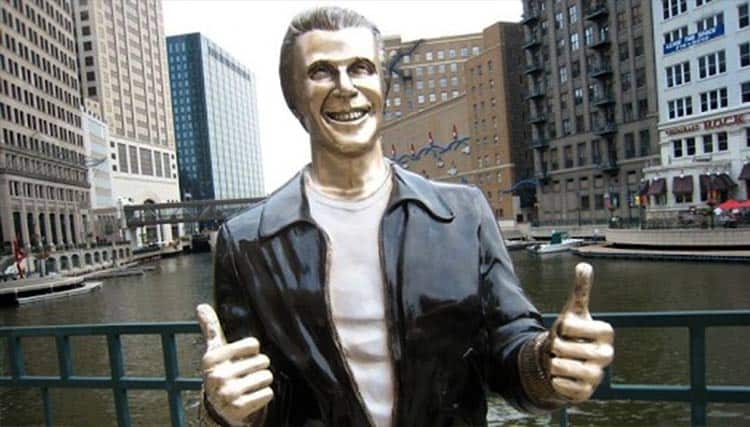
Gerald Sawyer grew fond of the 1970s TV sitcom Happy Days, which featured a character named Fonzie. His role was to be that handsome, cool sex guy of Italian descent that everyone loved. In real life, everyone loves Fonzie, who was played by Henry Winkler.
Fonzie became so popular that he dominated the Happy Days cast.
Sawyer created a statue as a tribute to the character and placed it in Downtown Milwaukee. Fonzie was so memorable that an artisan poured his soul into making this work of art.
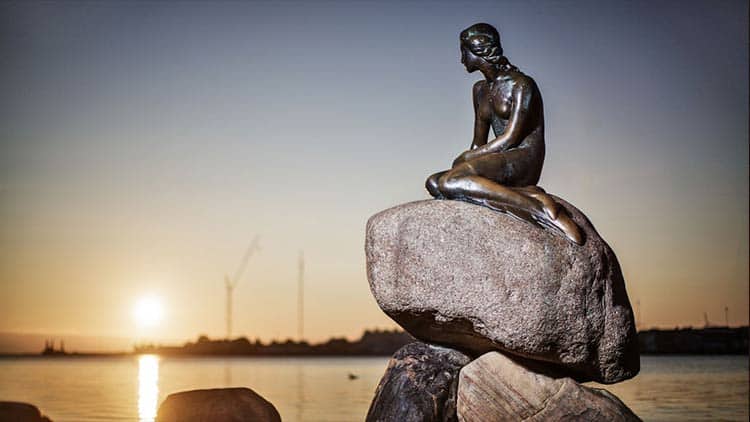
Before Disney adopted this Danish folktale into one of its hit animated movies, a bronze statue of the little mermaid was already a tourist attraction in Copenhagen, Denmark. Unlike the child-friendly Disney movie people of all ages love, the story behind this statue is that of repeated vandalism.
Despite how innocent this little mermaid statue looks, it became the target of continued vandalism since its unveiling in 1913.
The poor statue endured two decapitations and dismemberment, was vandalized with paint and graffiti, and became a target for bombing attacks.
Luckily, the statue still stands today, proving the lasting legacy of bronze in sculptures.
Spirit of Detroit Statue

In Detroit, you’ll see a 26-foot bronze monument called the “Spirit of Detroit.” This statue represents the city’s resilience despite its history of civil unrest because of human rights violations and discrimination.
The statue embodies liberty and has become a centerpiece of this historic city in the United States. Marshall Fredericks sculpted this monument and infused Detroit’s spirit into metal.
The Charging Bull
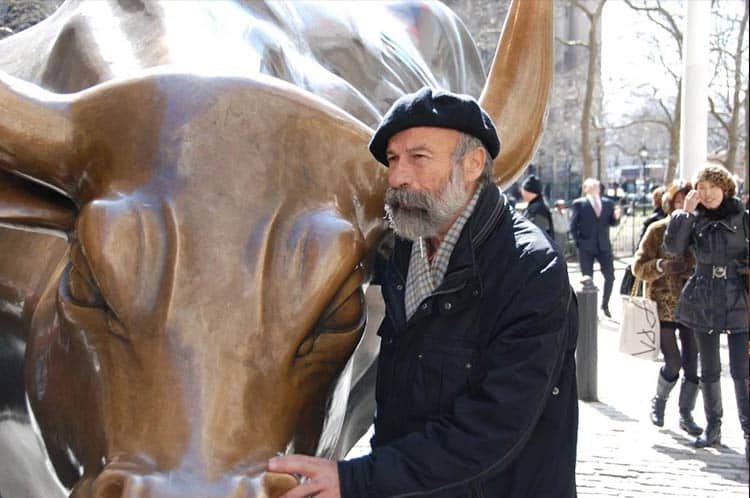
If you read history, the “Black Monday” stock market crash of 87 caused a loss of $1.71 trillion worldwide. However, an icon rose in America’s financial center after that dreadful day.
Arturo Di Modica installed his bronze statue of a charging bull on Wall Street, New York, to show his optimism that America won’t simply falter even from an economic crash.
He created this statue with his life story in mind. He came into the U.S. broke, but he became successful through sheer will and dedication.
The charging bull represents a brave dash into the future with hope for a better life. The statue is Modica’s way of saying thanks to America, where he became a successful artist.
The Thinker

You might have seen this statue as a meme today, but this work of art is called “The Thinker.”
Auguste Rodin created this nude, buff, bronze man sitting in a reflective mood in the 1880s. Many believe he was inspired by Dante’s Divine Comedy to sculpt this statue.
Now, the story behind this bronze sculpture is that the model who posed for this statue is Jean Baud, a French wrestler who appeared in red-light districts.
Artistic Expression Through Craftsmanship
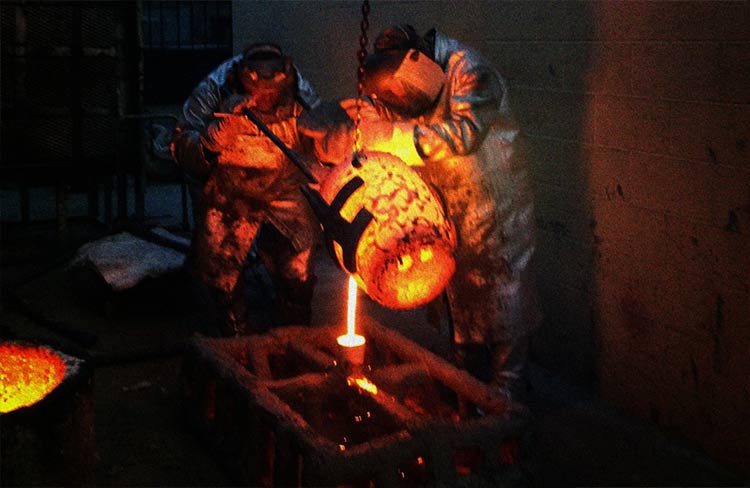
Sculpture is a hands-on process where the artist directly works with the material, in this case bronze, to imbue one’s passion, thoughts, and heart. The artist’s expression is evident in the quality of the statue, and people can physically see the artisan’s mind at work.
You can’t work with metals like bronze without patience. While talent and skill are needed to craft art, patience is the key to turning any creation into a masterpiece.
Artistic talent combined with patience is craftsmanship; a tangible representation of something that can’t be seen or touched, that is, the spirit of an artisan.
Understanding the artisan’s spirit gives value to a bronze statue. Awareness of the stories behind a sculpture is crucial for art appreciation.
How to Analyze Bronze Statues?
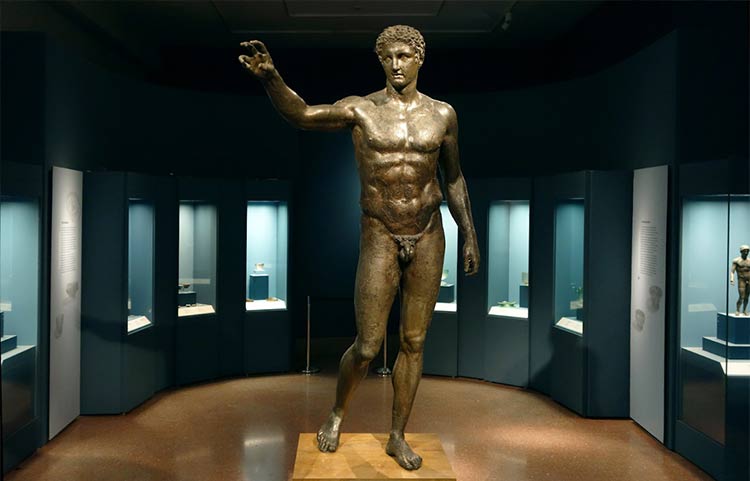
Understanding art is a process honed by specific principles outlined by experts and masters of the craft. Analyzing art starts with knowing who created it and where and when it was created.
Next is understanding the technical features of the artwork. Here, you’ll consider the size, the medium used, and the artwork’s history. Lastly, you need to fully grasp the artist’s chosen motif, the culture that produced the artwork, the content behind the artwork, and the artisan’s message.
Common Themes in Bronze Sculptures
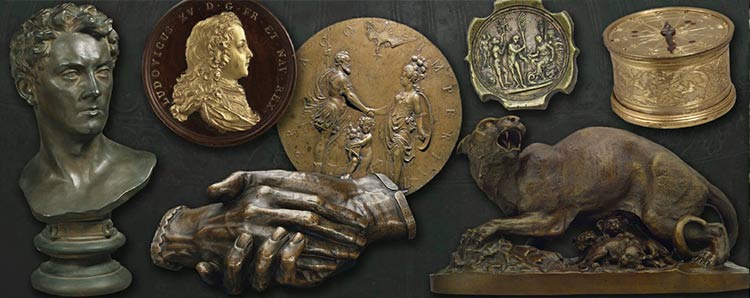
One thing you can observe when understanding bronze sculptures is that humanity is the most common theme of the works of art. Most bronze statues depict humans. Many use bronze to honor iconic people or individuals who have impacted a specific region’s culture. The Romans and Greeks used bronze to immortalize their leaders.
Other themes for bronze sculptors are statues for decorative purposes, to beautify a home or a cultural center like a museum. So, a tribute to pets or an event is also a common theme for bronze sculptures.
The Difference Between Classical Statues and Modern Bronze Sculptures
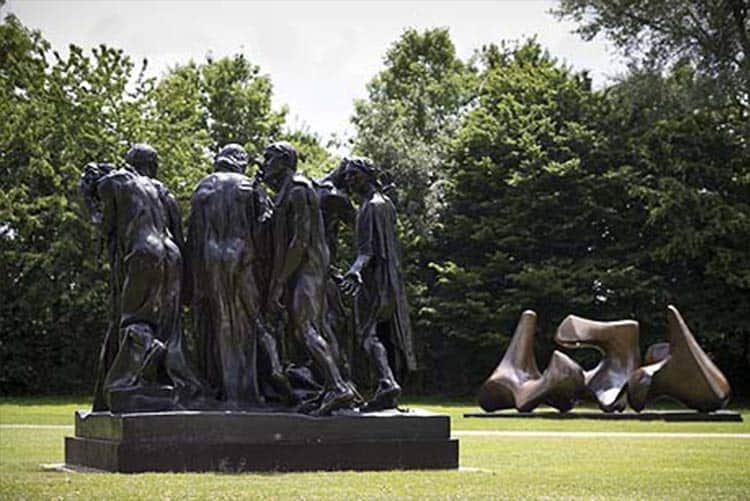
You can see the difference between classical and modern art by the technique and the themes. Ancient and classical statues have similar techniques, designs, and motifs. Artisans back then were inclined to follow standards, norms, and traditions in art.
However, one stark difference you’ll see in modern art is the preference for individuality and uniqueness. Contemporary art focuses on the artist’s personal creativity and not their ability to “copy” mainstream standards.
Significance of Understanding Bronze Sculptures
For thousands of years, bronze was considered a perfect medium for sculpture. Many artisans prefer to work with this material to immortalize their ideas because it can withstand the elements and grows more robust with age.
This resilient property of bronze also symbolizes the enduring nature of humanity’s creativity and love for the arts. Humanity’s artistic nature will be one of our lasting legacy; bronze sculpture is tangible evidence of this characteristic.
Interested in bronze sculpture artists who can encapsulate your stories into works of art? Then K-Statues is your go-to place. We have over 30 years of experience in bronze statue making and have shipped our sculptures to over 150 countries.
Our bronze casting methods include the traditional lost wax technique, which creates incredible detail for the statues we produce.
Just visit our website and check out our catalog of statues, not only of bronze but also of other popular materials such as marble. Check out our site now and get the best offer today.


Pingback: ordering enclomiphene price london
Pingback: medicament kamagra sans prescrire pilule contraceptive
Pingback: androxal shipped overnight no perscription
Pingback: discount dutasteride usa price
Pingback: discount flexeril cyclobenzaprine price in canada
Pingback: gabapentin without a prescription
Pingback: online order fildena australia over the counter
Pingback: buy cheap itraconazole buy japan
Pingback: purchase avodart generic next day delivery
Pingback: cheapest buy xifaxan australia to buy
Pingback: how to buy rifaximin cost australia
Pingback: kamagra bez persripce